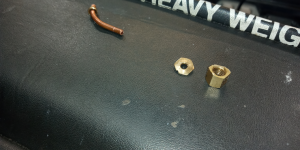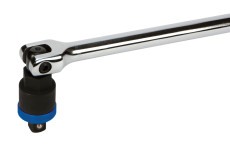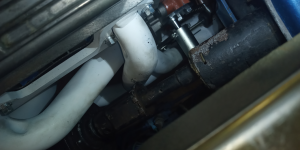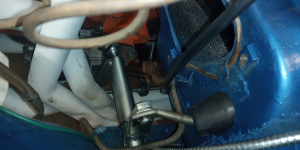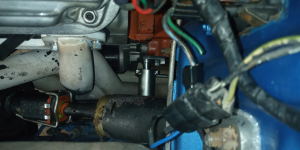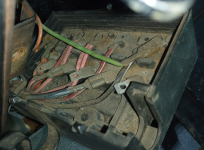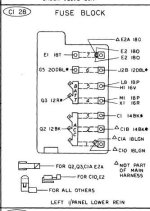b-body-bob
Well-known member
10w-30 for oil, right? I broke it in with straight 30w Lucas, so I tend to stick with what worked for me ....
Lucas Oil 10679-1 Lucas Hot Rod and Classic Car Motor Oil | Summit Racing
I miss the good old days when you just grabbed whatever oil and all was well.
Once I raise it up for the oil change I will take care of looking around underneath for leaks and checking the clutch adjustment. Then hi-ho, it's around the block we go.
Another note, the timing was at 30 BTDC while "idling" yesterday. I gassed it and noticed it jump way up, then come back after a point. I was surprised at first because I had the limiter plate installed at 18* and initial @ ~ 15*, but forgot the vac advance was plugged in (ported).
I didn't bother with advancing it more because it was running so cool. I don't know if it's going to act different at idle (after I adjust the throttle cable), but it seemed strong yesterday so I will likely just leave it where it is and see how it goes.
Looked under the car this morning and saw no new drips on the floor. We moved it forward from where it was yesterday with the exhaust outside the doors so the floor under the engine was dry to start with. I will still look but those drips might have even been from grease melting and dripping down. I had my grimy hands on everything under the car at one point or another and I never did clean up the torsion bars as good as I should have.
One gripe, I screwed up and bought a new gas can at the Kroger gas and go, and the stupid thing has some sort of goofy safety nozzle on it. Basically, it's useless because you have to press a button, slide the nozzle back, and hold it somehow while you pour the gas. There's not even a vent on the can, the nozzle vents itself. It had some sort of a splash guard inside the can too that blocked me from putting the hose too far in. That thing's in the bottom of the can now, and I swiped the nozzle out of a normal can that fit good enough for me to fill a pop bottle for use priming the carb.
Lucas Oil 10679-1 Lucas Hot Rod and Classic Car Motor Oil | Summit Racing
I miss the good old days when you just grabbed whatever oil and all was well.
Once I raise it up for the oil change I will take care of looking around underneath for leaks and checking the clutch adjustment. Then hi-ho, it's around the block we go.
Another note, the timing was at 30 BTDC while "idling" yesterday. I gassed it and noticed it jump way up, then come back after a point. I was surprised at first because I had the limiter plate installed at 18* and initial @ ~ 15*, but forgot the vac advance was plugged in (ported).
I didn't bother with advancing it more because it was running so cool. I don't know if it's going to act different at idle (after I adjust the throttle cable), but it seemed strong yesterday so I will likely just leave it where it is and see how it goes.
Looked under the car this morning and saw no new drips on the floor. We moved it forward from where it was yesterday with the exhaust outside the doors so the floor under the engine was dry to start with. I will still look but those drips might have even been from grease melting and dripping down. I had my grimy hands on everything under the car at one point or another and I never did clean up the torsion bars as good as I should have.
One gripe, I screwed up and bought a new gas can at the Kroger gas and go, and the stupid thing has some sort of goofy safety nozzle on it. Basically, it's useless because you have to press a button, slide the nozzle back, and hold it somehow while you pour the gas. There's not even a vent on the can, the nozzle vents itself. It had some sort of a splash guard inside the can too that blocked me from putting the hose too far in. That thing's in the bottom of the can now, and I swiped the nozzle out of a normal can that fit good enough for me to fill a pop bottle for use priming the carb.

